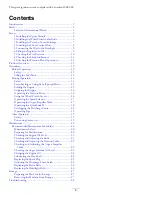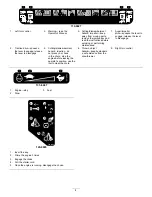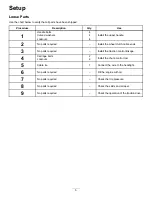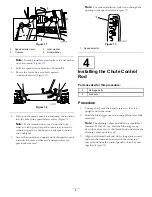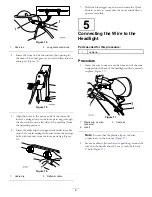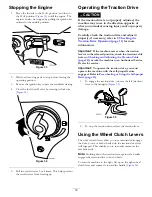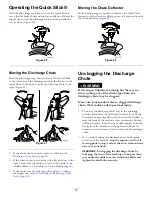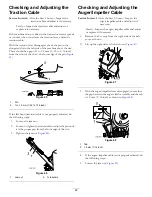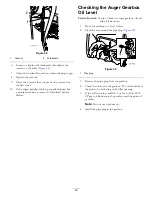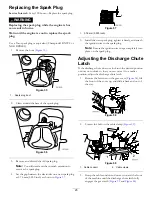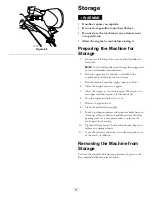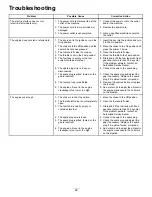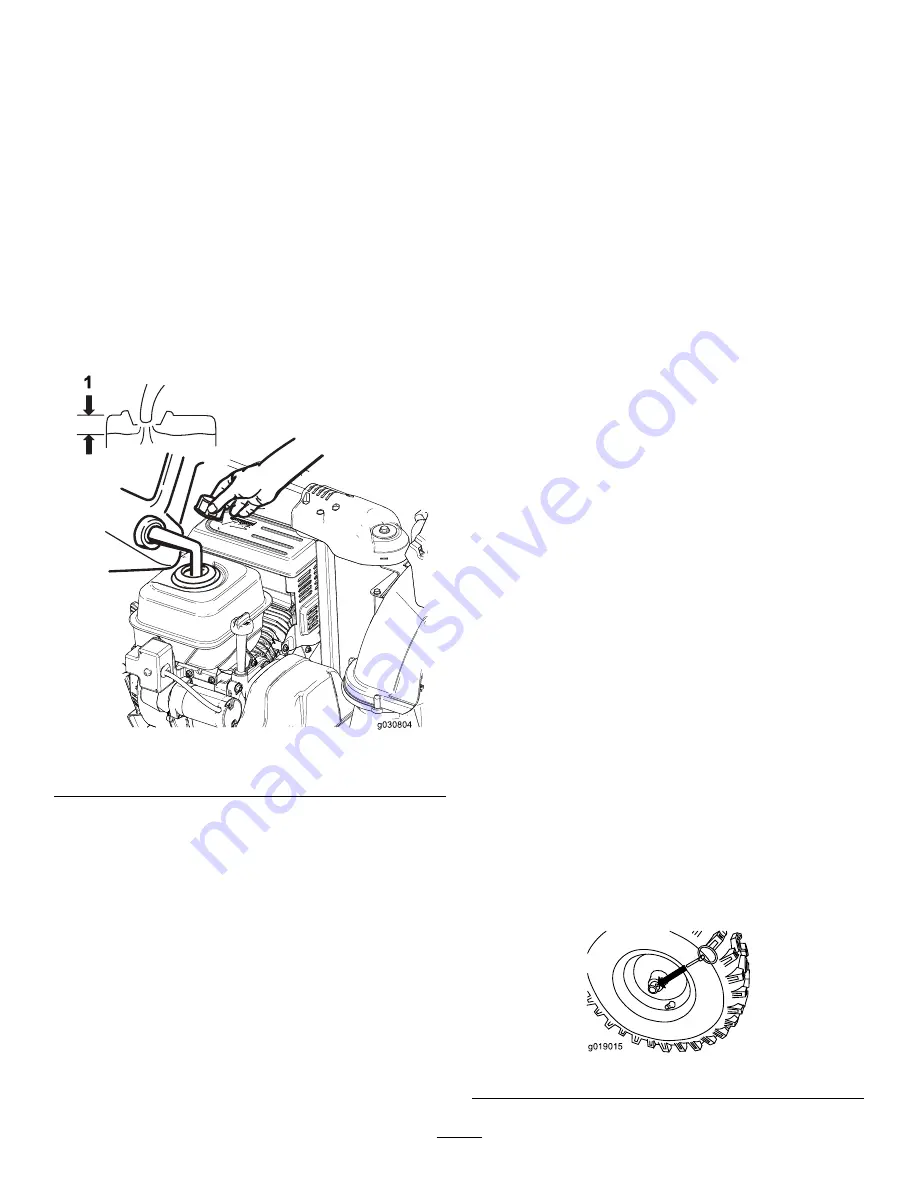
•
For best results, use only clean, fresh, unleaded gasoline
with an octane rating of 87 or higher ((R+M)/2 rating
method).
•
Oxygenated fuel with up to 10% ethanol or 15% MTBE
by volume is acceptable.
•
Do not
use ethanol blends of gasoline (such as E15
or E85) with more than 10% ethanol by volume.
Performance problems and/or engine damage may result
which may not be covered under warranty.
•
Do not
use gasoline containing methanol.
•
Do not
store fuel either in the fuel tank or fuel containers
over the winter unless a fuel stabilizer is used.
•
Do not
add oil to gasoline.
Important:
To reduce starting problems, add fuel
stabilizer to the fuel all season, mixing it with gasoline
less than 30 days old.
Do not add oil to the gasoline.
Figure 24
1.
3.8 cm (1-1/2 inch)
During Operation
Safety
•
Rotating auger blades can injure fingers or hands.
Stay behind the handles and away from the discharge
opening while operating the machine.
Keep your face,
hands, feet, and any other part of your body or
clothing away from moving or rotating parts.
•
Never direct the discharge toward people or areas where
property damage can occur.
•
Exercise caution to avoid slipping or falling. Always be
sure of your footing, and keep a firm hold on the handles.
Walk; never run.
•
Exercise extreme caution when operating on slopes.
•
Never operate the machine without good visibility or
light.
•
Look behind and use care when backing up with the
machine.
•
When not actively clearing snow, disengage power to the
rotor blades.
•
Use extension cords and receptacles as specified by
the manufacturer for all machines with electric starting
motors.
•
Do not attempt to clear snow from a gravel or crushed
rock surface. This product is intended for use only on
paved surfaces.
•
Do not use the machine on a roof.
•
Never attempt to make any adjustments while the engine
is running (except when specifically recommended by
manufacturer).
•
Stay alert for hidden hazards or traffic.
•
After striking a foreign object, stop the engine, remove
the ignition key, thoroughly inspect the machine for any
damage, and repair the damage before restarting and
operating the machine.
•
If the machine should start to vibrate abnormally, stop
the engine and check immediately for the cause.
•
Do not run the engine indoors, except when starting
the engine and for transporting the machine in or out
of the building. Open the outside doors; exhaust fumes
are dangerous.
•
Do not overload the machine capacity by attempting to
clear snow at too fast a rate.
•
Never touch a hot engine or muffler.
•
Thoroughly inspect the electrical cord before plugging
it into a power source. If the cord is damaged, do not
use it to start the machine. Replace the damaged cord
immediately. Unplug the power cord whenever you are
not starting the machine.
Freewheeling or Using the
Self-propel Drive
You can operate the snowthrower with the self-propel feature
engaged or disengaged (freewheeling).
To freewheel, insert the axle pins through the axle holes, but
not through the wheel hubs (
).
g019015
Figure 25
13


